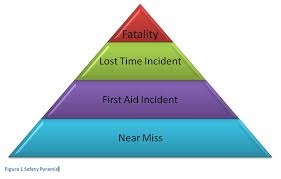Information
-
Conducted on
-
Location
WEEKLY ACCIDENT REVIEW
-
The week of September 9, 2013 Southland Industries reported no new injuries. Please continue to work safely, report hazards to your foremen, and pre-task plan your work so we can make 2013 our safest year!
WEEKLY TOPIC
-
HOW NOISE CAN HURT YOU:
- We all work in noisy conditions at times
- Too much noise exposure can hurt you. It can cause you to miss important safety instructions, result in stress and lead to hearing loss
- Prolonged exposure to noise can result in permanent hearing loss
- Even if you are exposed to loud noise for a short time you may temporarily lose your hearing
SOME EXAMPLES OF LOUD NOISE:
- Noise is measured in a term called "decibels"
- Noise that is more than 85 decibels can affect your hearing if you work around it more than 8 hours a day
- Some examples of 85 decibels if noise are air hammers, hammer drills, or chops saws
- if you use power tools for more than 1 hour a day without hearing protection, you may damage your hearing
HOW TO TELL IF NOISE IS HURTING YOU:
- You may have a problem if you hear ringing or other noises in your ears, cannot hear people when they talk to you, or cannot hear high-pitched or soft sounds.
YOU CAN PROTECT YOUR HEARING:
- One good way to protect your hearing is to wear ear plugs when you are exposed to loud noise. These reduce noise when inserted properly into your ears.
- Wearing ear muffs is another good way to protect your hearing. These cover your entire ear.
- Ear plugs and ear muffs come with a "noise reduction rating" or NRR. Be sure your hearing protection has an NRR of at least 25.
WEARING EARPLUGS AND EARMUFFS:
- Wash your hands before you insert earplugs or put on ear muffs.
- Check for cracks or other damage. report any problems to your supervisor, and get different hearing protection.
- Check the manufacturer's instructions.
- Foam ear plugs are usually inserted by rolling each plug into a thin cylinder, then compressing it before inserting it. Hold it there until it expands.
- Be sure your hearing protection fits comfortably, and is not too loose or too tight.
OPPORTUNITY FOR IMPROVEMENT
-
Opportunities for improvement are ALWAYS welcome! Use the Opportunity for Improvement template on iAuditor to submit.
JOBSITE SAFETY CHECKLIST
-
Select date
-
Job Name:
-
Job Number:
-
Checked By:
-
Signature:
1. RECORDKEEPING
-
a. Notices, Posters (5-in1, OSHA Notice, Payroll)
-
b. Emergency Contacts
-
c. OSHA 300 Log
2. PERSONAL PROTECTIVE EQUIPMENT
-
a. In use: Safety glasses, Hard hats, Work boots, Gloves
-
b. Face shields or goggles used for overhead work
-
c. Respirators available
-
d. Welding screens
3. FIRST AID KITS
-
a. Available in gang box and job site trailer
-
b. Stocked adequately with gloves, bandages, and antiseptics
-
c. CPR and First Aid trained personnel
-
d. Medical facility location and contact information communicated
4. SCAFFOLDS
-
a. Competent person certified
-
b. Scaffold grade planking
-
c. Fall protection
-
d. Clear of debris / trash
5. LADDERS
-
a. Free from defects with safety feet, blocked, cleated, or otherwise secured.
-
b. Straight ladders at 1:4 pitch
6. CYLINDERS
-
a. Capped, stored in an upright position
-
b. Oxygen / Acetylene properly separated
-
c. Empty gas cylinders marked
7. TOOLS / EQUIPMENT
-
a. Inspected to ensure safe operating condition
-
b. Hand tools free from defects
-
c. Unsafe / Unusable tools / equipment tagged "Do Not Use"
-
d. Tools / Equipment properly guarded
8. HOUSEKEEPING
-
a. Maintained
-
b. Aisles and exit ways clear with 24" clearance
-
c. Work areas uncluttered and debris removed
9. ELECTRICAL
-
a. Electrical equipment grounded
-
b. Tools double insulated
-
c. Cords in good condition
-
d. Electrical panels covered if energized
10. FALL PROTECTION
-
a. Guard rails, mid rails, toe boards
-
b. Fall restraint systems
-
c. Open sides floors or platforms equipped with standard railing
-
d. Openings (interior / perimeter) properly barricaded or covered
11. FIRE PREVENTION
-
a. Flammable and explosive materials stored safely
-
b. Adequate number of fire extinguishers available with tags and clips
-
c. Vehicles and mobile equipment provided with extinguishers
12. EXCAVATIONS
-
a. Over 4 ft shored, benched, or sloped as required
-
b. Steps or ladders at 25 ft intervals
-
c. Competent person on site
13. HAZARD COMMUNICATION
-
a. MSDS and Labels available
-
b. Employees briefed on HAZCOM
-
c. HAZCOM information poster posted
-
d. Employees familiar with MSDS books and their location
COMMENTS
-
Type comments here or use "Sign" function to write:
-
Write here:
PRE-TASK PLAN
-
Ensure a Pre-Task Plan is completed on paper or via the iAuditor app.
CREW SIGNATURES
-
Add signature
-
Add signature
-
Add signature
-
Add signature
-
Add signature
-
Add signature
-
Add signature
-
Add signature
-
Add signature
-
Add signature
-
Add signature
-
Add signature
-
Add signature
-
Add signature
-
Add signature














